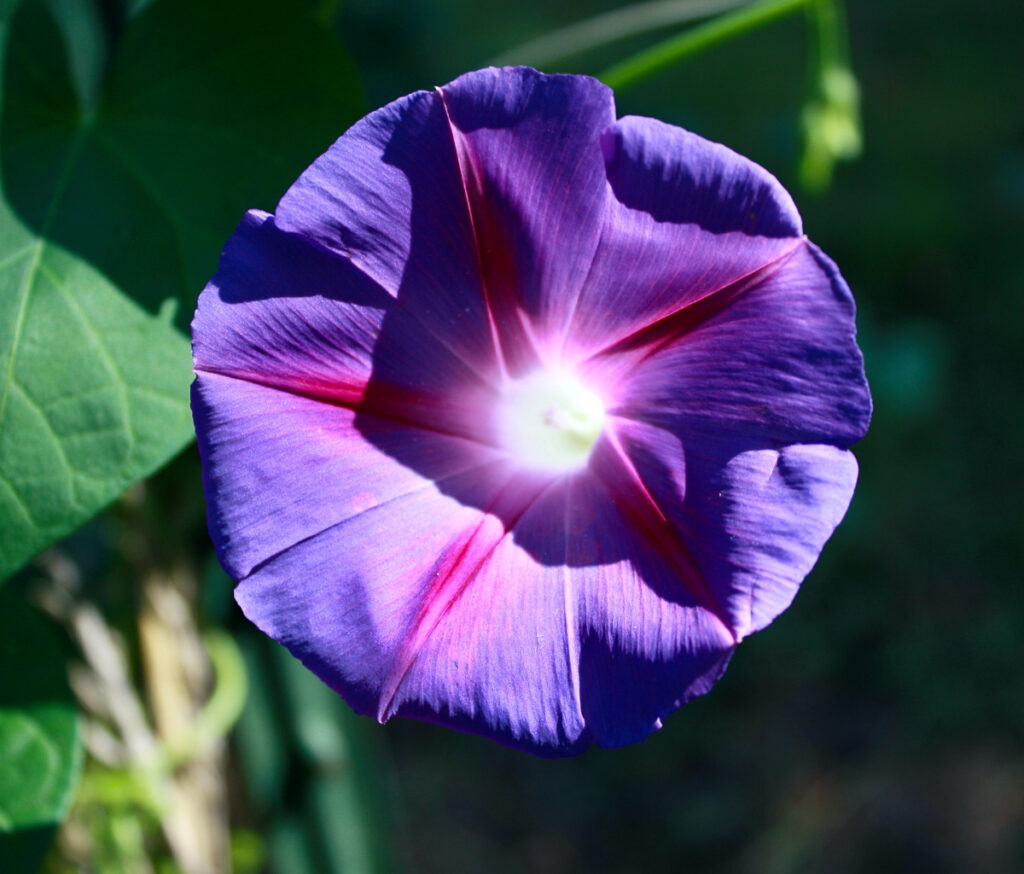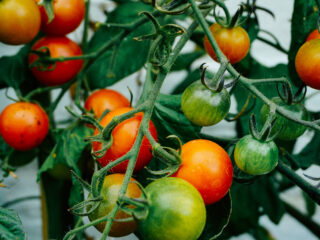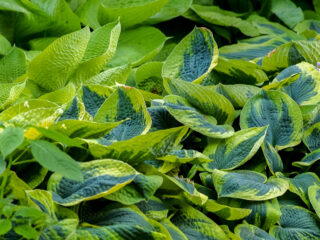
Types of Flowers to Know When Planting and Starting A Garden
Dreaming of a huge flower garden? Not sure where to start? Let’s break it down so you can get a good idea of what to expect.
Types of Flowers
There are 3 categories you need to know:
- Annuals
- Perrenials
- Bulbs

Annual Flowers
Annuals are plants that sprout, grow, bloom, and go to seed all in one season and only for one season.

When winter comes, the plant dies, relying on its many seeds to germinate in the following spring. Because of this, most annual flowers are easy to grow from seed, taking about 6 – 8 weeks to grow to a transplantable size, though there are always exceptions to the rule. Some seeds may just take longer to germinate and slower-growing annuals will need to be started earlier.
Be sure to read the backs of your seed packets for plant- and variety-specific recommendations!
Since most annuals are frost tender, you’ll need to wait until after the last spring frost date to transplant them into your garden.
How Long Do Annuals Take to Grow?

3-6 Weeks
Speedy annuals such as morning glories and sunflowers may take only 3-4 weeks to reach a transplantable size. Zinnias only need a 4- to 6-week head start and can be transplanted outdoors after your last spring frost date. Alternatively, these fast-growing annuals can be directly sown in the garden after the danger of frost has passed.

Pictured: Marigold
6-8 Weeks
Annuals that take 6-8 weeks to grow and can go out when the frost free date arrives include:
- Ageratum, asters, bachelor buttons, celosia, cosmos, gomphrena, marigolds, nicotiana, salvia, scabiosa, statice, and strawflowers.
Alyssum, calendula, and delphiniums also take about 6-8 weeks to grow, but these can go outside a little earlier: 1-2 weeks before the last frost.

8-10 Weeks
These annuals are slower to germinate and take 8-10 weeks to reach a good size for the garden. They can go out on the frost free date:
- Petunias, phlox, snapdragons, stock, and verbena.

Perennials
Perennials are plants that are capable of surviving two or more years. While they may die in winter, their roots survive underground and produce new foliage as the increased light and warmth of spring arrives. Most perennials will bloom in the same year that they are planted, while others may need to spend time becoming established firs.
Since most annuals are frost tender, you’ll need to wait until after the last spring frost to transplant them into your garden.

Plant Mature Perennials in the Fall
If you’re planning on adding mature perennial plants (something you bought from a nursery) to your garden, the best time to plant is in the fall so the cold temperatures and moisture that come with winter kick start germination.
Plant them at least 6 weeks before your first fall frost date in order to give them time to settle in before winter. Roots will still grow while temperatures are in the 40s (Fahrenheit).

How Long Do Perennials Take to Bloom
8-10 Weeks
Many perennials take 8 to 10 weeks to reach a good size and can be transplanted on or after the last frost date:
- Anise hyssop, catmint, columbine, coreopsis, echinacea, gaillardia, helianthus, hollyhock, monarda, thyme, and yarrow.
Rudbeckia and violas are a little hardier and can go out in the garden 1 to 2 weeks before the last frost. Perennial hibiscus, on the other hand, need to wait 1-2 weeks after the frost free date has passed.

10-12 Weeks
Daisies, delphinium, and dianthus should be started 10 to 12 weeks ahead and can be planted out 1 to 2 weeks before the frost free date.
Asclepias, foxglove, heliopsis, and phlox take 10 to 12 weeks, but need to wait until after the last frost to be transplanted.

Spring and Summer Bulbs
Planting bulbs is another way to add seasonal pops of color to your garden. Bulbs are divided into two main categories: spring-flowering bulbs and summer-flowering bulbs.
- Spring-flowering bulbs are those that bloom from early spring to early summer. Included in this category are flowers like tulips, crocuses, and daffodils.
- Summer-flowering bulbs are those that bloom from early summer to early fall. Included in this category are flowers like gladiolus, dahlias, and cannas.

Generally speaking, spring-flowering bulbs should be planted in the fall (a few weeks before first frost), while summer-flowering bulbs should be planted in the spring (a few weeks after last frost).
Why? In many cases, summer-flowering bulbs are not hardy enough to survive winter outdoors, while spring-flowering bulbs may actually need a period of colder weather to trigger their spring blooms. There are exceptions, of course! Hardy perennials that flower in the summer, like daylilies, can be planted in the spring or fall.

What Makes a Bulb a Bulb?
Not all “bulbs” are actually bulbs! A true bulb is a specific type of underground storage structure—think onions, tulips, and daffodils. Many popular “bulbs” are actually other types of structures, like corms (gladiolus), rhizomes (irises, daylilies), and tubers (dahlias). However, most gardeners simply refer to this entire category of plants as “bulbs” to make things a little easier!
Caring for Bulbs
Wait until spring-flowering bulbs have finished blooming and their foliage has died back before digging, dividing, or moving them around. Mark their locations with brightly-colored popsicle sticks so you can find them more easily in late summer or early fall, which is the time to divide and transplant.
Fall is also the time to dig up summer-flowering bulbs that need to be stored inside for winter.
So which flowers actually grow in Zone 7?
Pretty much everything! Everything at your local garden nursery will grow in your area. It’s really just a matter of timing things appropriately. Choose from flowers at your local shop and ask a work if you get confused.
You can also order florals online! There are several farms that offer bulk bulbs.
Looking for recommendations? Read our article: Common Plants and Flowers for Zone 7 and discover 17 popular flowers and plants.
Information courtesy of Farmer’s Almanac.
What are you favorite plants or green thumb tips? Leave a comment below!
Receive the Latest Issue





Leave a Reply